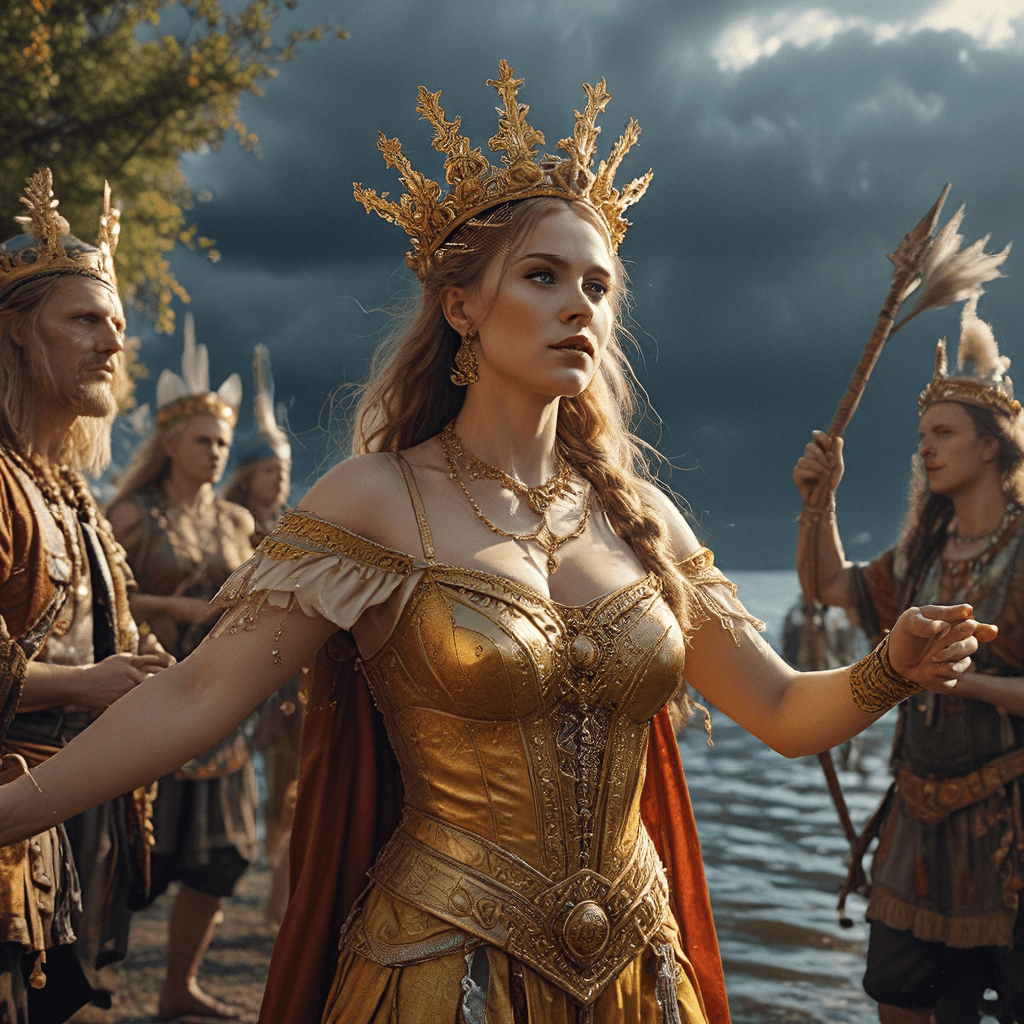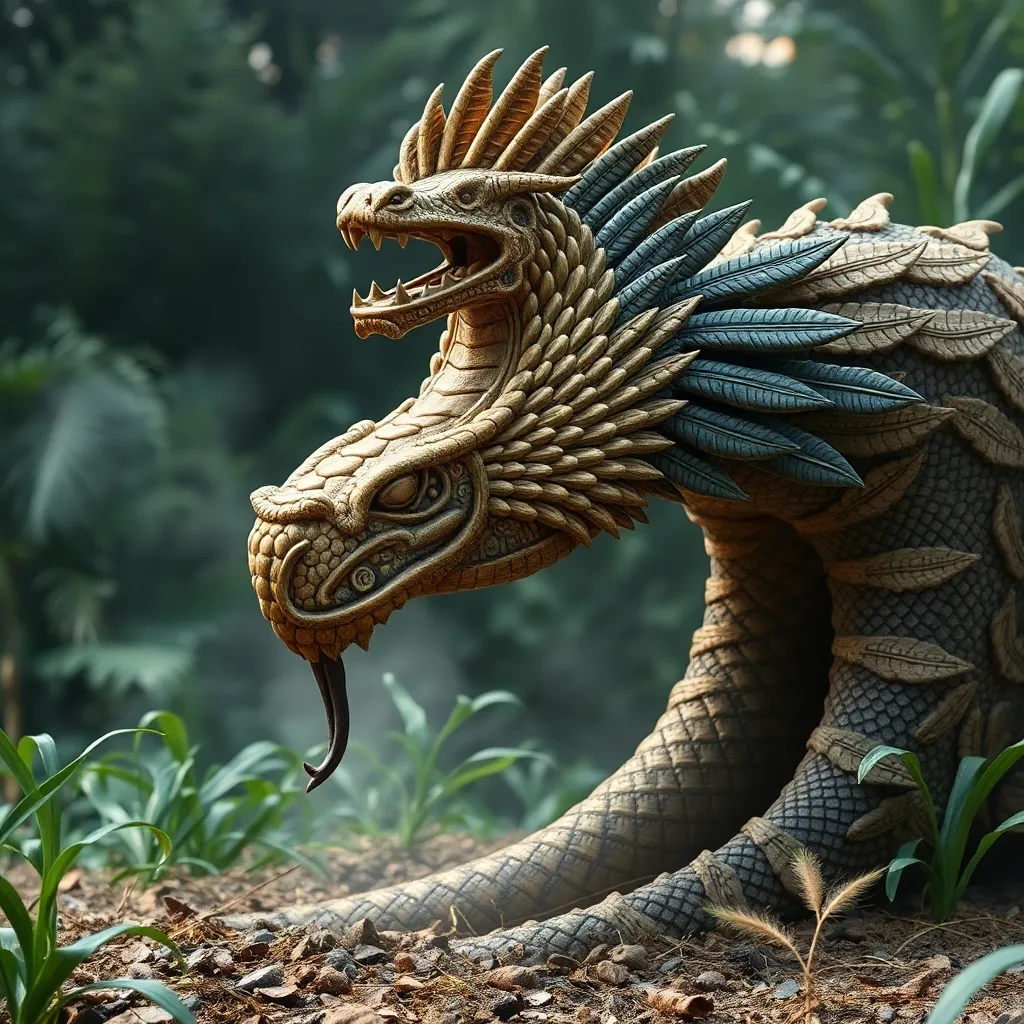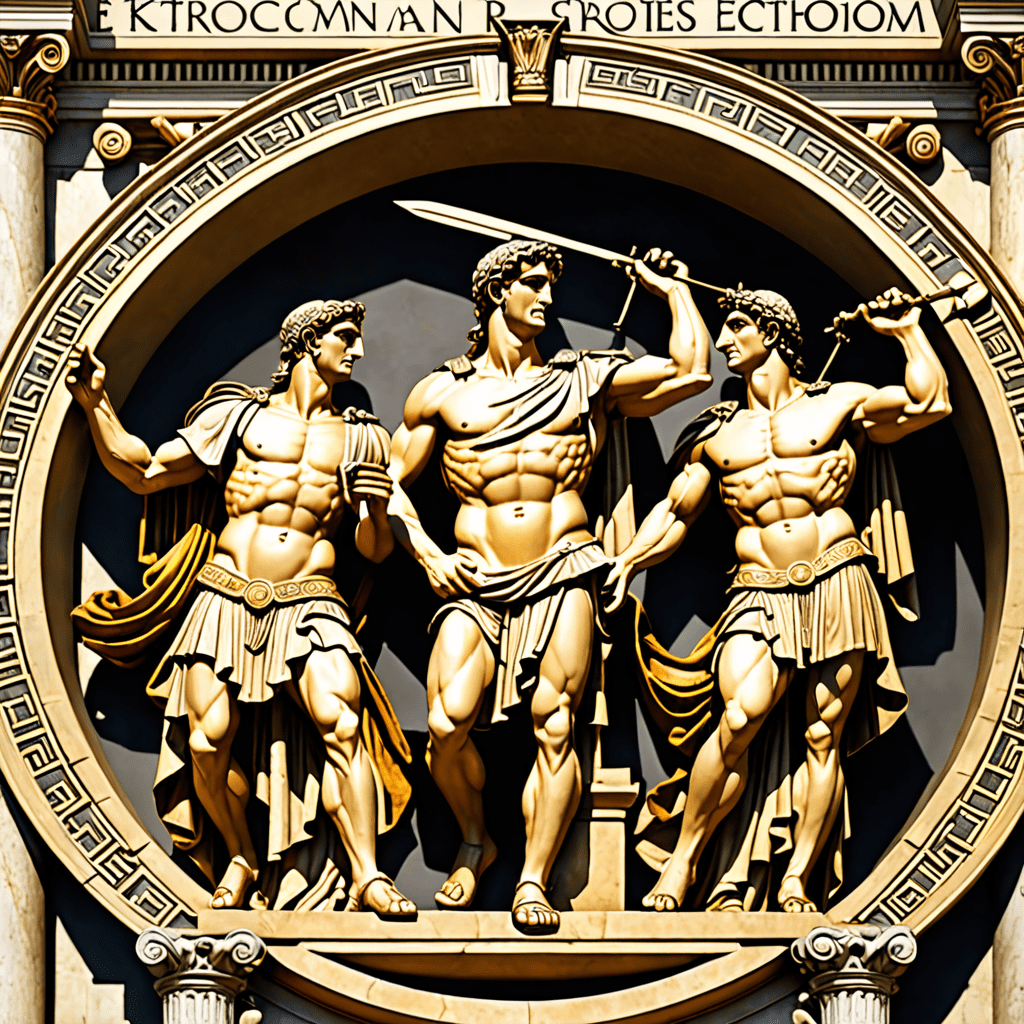The Underworld: Myths That Explore the Nature of Life and Death
I. Introduction to the Concept of the Underworld
The underworld is a profound concept that transcends cultural boundaries, representing the realm of the dead and the mysteries surrounding life and death. In various cultures, it serves not only as a destination for souls after death but also as a reflection of the fears, beliefs, and hopes of the living.
Throughout history, myths about the underworld have explored themes of mortality, the afterlife, and the cyclical nature of existence. These stories often provide insight into how different civilizations understood the transition from life to death and vice versa.
II. The Underworld in Ancient Civilizations
A. Egyptian Mythology: Duat and the Journey of the Soul
In ancient Egypt, the underworld is known as Duat, a complex realm that the soul must navigate after death. The journey involves various challenges and judgments, including the weighing of the heart against the feather of Ma’at, representing truth and justice. Successful navigation leads to eternal life, while failure results in obliteration.
B. Greek Mythology: Hades and the Afterlife
In Greek mythology, the underworld is ruled by Hades, the god of the dead. The underworld is divided into various regions, including the Elysian Fields for the blessed and Tartarus for the damned. The journey to Hades often involved crossing the river Styx, ferried by Charon, which symbolizes the transition between life and death.
C. Mesopotamian Beliefs: The Land of the Dead
Mesopotamian beliefs about the afterlife depicted a dreary underworld known as Irkalla, where souls existed as shadows of their former selves. The journey to this land was inevitable, but the living could perform rituals to honor their deceased, ensuring that their memories persisted in the world of the living.
III. The Duality of Life and Death in Underworld Myths
A. The cyclical nature of existence
Many underworld myths emphasize the cyclical nature of life and death. For instance, the changing seasons often mirror the life cycle, with death leading to rebirth. This cycle reflects the belief that death is not an end but a necessary part of existence.
B. The representation of death as a transformation rather than an end
In various myths, death is portrayed as a transformation. Instead of viewing death as a finality, cultures often see it as a transition to another form of existence, where the soul continues its journey. This perspective fosters a more profound understanding of life, encouraging individuals to contemplate their legacy.
IV. The Role of Deities and Guides in the Underworld
A. Charon and the concept of ferrymen
Charon, the ferryman of the dead in Greek mythology, plays a pivotal role in guiding souls across the Styx. His presence underscores the necessity of proper burial rites, as only those who could pay him with an obol were allowed passage. This highlights the cultural importance of funeral practices.
B. Anubis and the importance of burial rites
In Egyptian mythology, Anubis, the jackal-headed god, oversees the mummification process and the journey of souls. His role emphasizes the significance of burial rites in ensuring a safe passage to the afterlife, reflecting the Egyptians’ deep-seated beliefs about the preservation of the body for eternity.
C. Persephone and the seasonal cycle
Persephone, the queen of the underworld in Greek mythology, embodies the duality of life and death through her annual descent to Hades and subsequent return to the surface. This cycle represents the changing seasons, symbolizing renewal and the interconnectedness of life and death.
V. Symbolism of the Underworld in Folklore
A. The underworld as a reflection of the subconscious
The underworld often symbolizes the subconscious mind, where hidden fears and desires reside. Myths about the underworld invite individuals to confront their inner struggles and the darker aspects of their psyche, providing a path toward self-discovery and acceptance.
B. Common symbols: rivers, gates, and other thresholds
- Rivers: Often represent the boundary between the living world and the afterlife, as seen with the Styx and the Nile.
- Gates: Symbolize the transition points where souls enter the underworld, such as the gates of Hades.
- Thresholds: Represent the journey from one state of being to another, emphasizing the transformative nature of death.
VI. Cultural Variations of the Underworld
A. The Norse Helheim and its significance
In Norse mythology, Helheim is the realm of the dead, ruled by the goddess Hel. Unlike other mythologies, Helheim is not a place of punishment; it is where souls go based on their lives. This reflects the Norse belief in honor and valor, where only those who died heroically reached Valhalla.
B. The Aztec Mictlan and the journey of souls
For the Aztecs, Mictlan is the destination for the souls of the dead. The journey to reach Mictlan is fraught with challenges, requiring souls to navigate through nine levels, each with its own trials. This journey emphasizes the importance of death as a rite of passage.
C. The Hindu Naraka and concepts of karma
In Hindu beliefs, Naraka is a temporary realm where souls face consequences based on their karma. This underscores the moral framework of Hinduism, where actions in life directly impact the afterlife, promoting ethical living as a pathway to liberation.
VII. The Underworld’s Influence on Literature and Art
A. Representation in classical literature (e.g., Dante’s Inferno)
Dante Alighieri’s “Inferno” serves as a compelling depiction of the underworld, illustrating the consequences of sin and the journey of the soul through various circles of hell. This work has profoundly influenced perceptions of the afterlife in Western literature and culture.
B. Visual arts: depictions of the afterlife in paintings and sculptures
Artists throughout history have drawn inspiration from underworld myths, creating haunting and thought-provoking pieces that explore themes of death and the afterlife. From Hieronymus Bosch’s “The Garden of Earthly Delights” to modern installations, these works provoke contemplation on mortality.
VIII. Modern Interpretations of Underworld Myths
A. Psychological perspectives on life and death
Modern psychology often interprets underworld myths as reflections of human fears and desires about death. These stories provide a framework for understanding grief, loss, and the human experience, allowing individuals to process their emotions and confront existential questions.
B. The underworld in contemporary media (films, books, games)
Today, the underworld continues to fascinate in various media forms. Films like “The Matrix” and “Coco,” books like Neil Gaiman’s “American Gods,” and video games like “Hades” offer reinterpretations of underworld themes, exploring the complexities of life and death in innovative ways.
IX. The Underworld as a Metaphor for Personal Struggles
A. The journey through grief and loss
Many individuals experience the underworld metaphorically during times of grief and loss. The darkness associated with the underworld can represent personal struggles, where one must navigate through pain to achieve healing and understanding.
B. Resilience and rebirth after facing darkness
Emerging from the underworld symbolizes resilience and rebirth, echoing the myths of transformation. This journey can lead to personal growth and a renewed appreciation for life, demonstrating the profound connection between life and death.
X. Conclusion: The Enduring Legacy of Underworld Myths
A. Reflection on the importance of understanding life and death
The myths surrounding the underworld offer valuable insights into the human condition, providing a framework for understanding the complexities of life and death. By exploring these narratives, we can better comprehend our own experiences and beliefs about mortality.
B. Final thoughts on how these myths shape our worldview today
As we navigate the challenges of modern life, the enduring legacy of underworld myths continues to shape our perspectives on death, transformation, and the cyclical nature of existence. Embracing these stories can enrich our understanding of life, encouraging us to confront our fears and celebrate the journey of existence.




